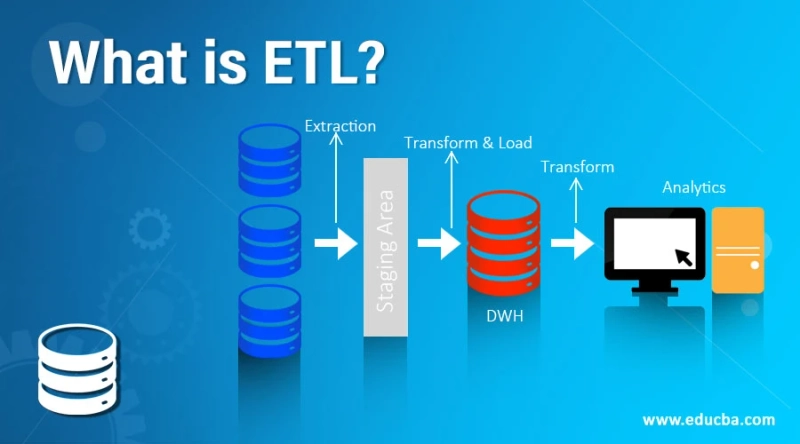What is ETL and Why Does It Matter? A Comprehensive Guide
Data management is an essential aspect of any organization. Businesses gather an enormous amount of data, which needs to be processed, analyzed, and transformed into valuable insights. ETL plays a significant role in this process by ensuring that data from various sources is collected, transformed, and loaded into a target system. This guide aims to provide a comprehensive understanding of ETL and its importance in data management.
What does ETL stand for?
ETL stands for Extract, Transform, and Load. The three phases involved in the ETL process are:
Extraction: The data is collected from various sources, including databases, files, and applications.Transformation: The collected data is transformed and cleaned to remove any inconsistencies, errors, or duplications.Loading: The transformed data is loaded into a target system, such as a data warehouse or a data mart.The Importance of ETL
ETL is essential for effective data management because it allows organizations to consolidate data from multiple sources into a single location. This ensures that data is consistent, accurate, and up-to-date, providing a reliable basis for analysis and decision-making.
ETL also enables organizations to extract value from data by transforming it into meaningful insights. By consolidating data from multiple sources, organizations can gain a comprehensive view of their operations, customers, and market trends, which can inform business strategy and drive growth.
Understanding the ETL Process
The ETL process consists of three phases: Extraction, Transformation, and Loading.
1.Extraction: In the Extraction phase, data is collected from various sources, including databases, files, and applications. The data can be in structured or unstructured formats, and the extraction method depends on the source.
2.Transformation: The Transformation phase involves cleaning, enriching, and transforming the extracted data to remove any inconsistencies, errors, or duplications. The data is also transformed to conform to the target system's structure and format.
3.Loading: In the Loading phase, the transformed data is loaded into a target system, such as a data warehouse or a data mart. The data is organized and stored in a structured format that is optimized for analysis and reporting.
Challenges with ETL
ETL can present several challenges, including data quality issues, data integration challenges, and scalability issues. Data quality issues can arise when data is collected from multiple sources with varying data formats and structures. Data integration challenges can occur when integrating data from multiple sources with different platforms, languages, and protocols. Scalability issues can arise when the ETL process involves large datasets that require significant processing power and resources.
Future of ETL
The future of ETL is bright, as the need for data management and analysis continues to increase. ETL is evolving, with the rise of new technologies such as cloud computing and big data, resulting in new challenges and opportunities.
Cloud-based ETL tools are becoming more popular, providing organizations with scalable and flexible options for data integration and management. The emergence of big data technologies is also driving the need for real-time data processing and analysis, requiring new approaches to ETL.
Conclusion
In conclusion, ETL is a critical component of data management, enabling organizations to consolidate, transform, and load data from multiple sources into a single location. ETL provides the foundation for effective data analysis and insights, enabling organizations to make informed decisions and drive growth. By following best practices and leveraging emerging technologies, organizations can optimize their ETL process, ensuring efficient and accurate data management.
Frequently Asked Question (FAQs)
Q: What is the difference between ETL and ELT?
A: ETL stands for Extract, Transform, and Load, while ELT stands for Extract, Load, and Transform. The main difference is the order of the transformation phase, which is performed after the data is loaded into the target system in ELT.
Q: What is a data warehouse?
A: A data warehouse is a large repository of data that is optimized for reporting and analysis.
Q: What are the benefits of ETL?
A: ETL enables organizations to consolidate data from multiple sources, ensuring consistency and accuracy. It also transforms data into valuable insights, informing business strategy and driving growth.
Q: What are some popular ETL tools?
A: Some popular ETL tools include Talend, Microsoft SQL Server Integration Services, Informatica, and Oracle Data Integrator.



